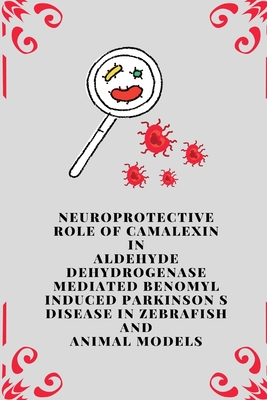You are here
Back to topNeuroprotective Role of Camalexin in Aldehyde Dehydrogenase Mediated Benomyl Induced Parkinson s disease in Zebrafish and Animal Models (Paperback)
This item is not available this time
Description
Parkinson's disease (PD) or Parkinsonism is a movement disorder and was named in 1817 by Dr. James Parkinson 1] who described his six patients with the "shaking palsy" (paralysis agitans) as PD, a chronic and progressive neurologic disorder associated with three clinical features-tremor, rigidity, and bradykinesia 2]. Up until now, very few can be added to Parkinson's keen observation of "involuntary tremulous motion, with lessened muscular power, in parts not in action and even when supported; with a propensity to bend the trunk forwards, and to pass from a walking to a running pace." Parkinson also noted the development of several non-motor symptoms (e.g., constipation, drooling, dysphagia, speech and sleep disturbances), the profound adverse impact on quality of living, and the importance of caregiver support 3].
A major of Parkinson's cases are of the idiopathic type, in which the cause is unknown; it is commonly referred to as Parkinson disease (PD) 4]. Less common forms of Parkinsonism are classified under secondary Parkinsonism (e.g., drug-induced), multisystem Parkinson plus syndrome, or hereditary Parkinsonism. The uncommon multisystem Parkinson plus syndromes are characterized by the occurrence of disturbed motor features and autonomic, neurologic, and psychiatric abnormalities 5, 6].
Several variants have been characterized, such as corticobasal degeneration, multiple system atrophies, and progressive supranuclear palsy. In general, this atypical Parkinsonism is not responsive or transiently responsive to antiparkinsonian therapy. Since the 1950s, drug-induced Parkinsonism has been the second most common form of Parkinsonism 7, 8].
The two major types of PD inducing agents are the ones that deplete central stores of dopamine (e.g., reserpine, methyldopa, tetrabenazine) and the one's that antagonize central dopamine receptors (e.g., chlorpromazine, haloperidol, metoclopramide) (Table 1.1) 9, 10].
